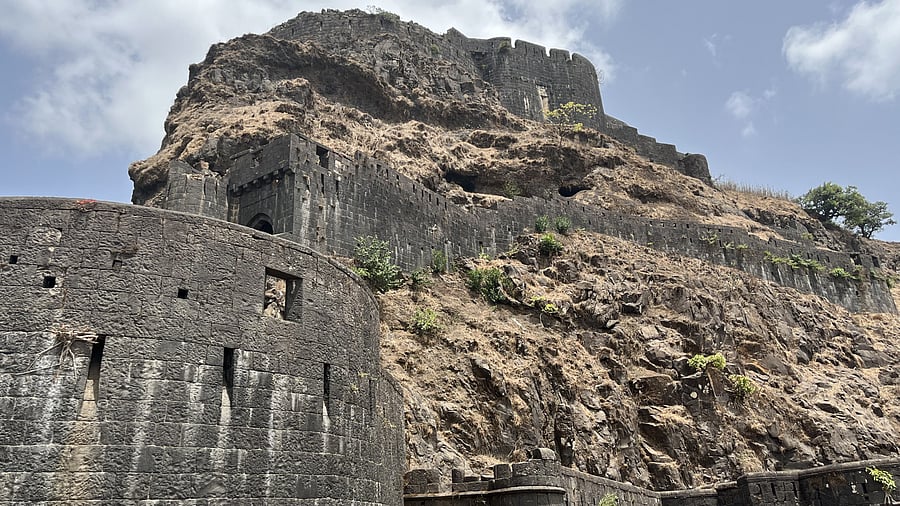
The Lohagad Fort.
Credit: Sudha Balachandran Photo
Situated in the verdant Sahayadri range of the Western Ghats is the small hill station of Lonavala. Being in close proximity to both Mumbai and Pune, Lonavala is much visited and an extremely popular weekend getaway in Maharashtra. The hills come alive during the rainy season as every inch is covered in a resplendent shade of green that is not only soothing to the eye but also weaves a dream-like misty tapestry.
We took the Pune-Mumbai Expressway which is a six-lane road built to connect the two cities and covered the 65 km distance to Lonavala in about 1.5 hours. The drive was smooth and scenic passing through tunnels. Lonavala, situated at an altitude of 624 m (2047 ft) has a good number of viewpoints and sight-seeing spots — like Duke’s Nose, Tiger’s Leap, Lonavala Lake, and Valvan Dam. We were keen on visiting the Buddhist caves dating back to the 3rd and 2nd century BC. While the Karla caves are more popular, we decided to visit the less-crowded Bhaja caves, near the village of Bhaja.
The caves are cut on a small hillock. We had to climb up some 50-odd steps to reach them. These rock-cut caves are unique in structure — consisting of a pillared prayer hall called chaitya and several dwelling rooms cut into the rocky surface. These were dwelling places for Buddhist monks and for weary travellers and tradesmen passing through the area.
The chaitya is an impressive construction with 15 rock pillars on either side of the room, a large stupa placed in the middle, and at the entrance, the ceiling resembling the shape of a horseshoe. A series of adjacent caves dot the prayer hall — each having 5 to 6 small cut-outs in the rock to act as rooms, with a raised platform to act as a bed, and a window opening to illuminate the chamber with sunlight. The entrance to these caves has a lattice design and decorative arches. The entire cave complex looks like a multi-storeyed building with balconies, resembling an ancient mansion of sorts!
Outside, there are several large stupas placed on the floor, each differently sized. The stupas have elaborate carvings on them and also names inscribed — possibly names of the resident monks who died at Bhaja. Some of the caves also have carvings on the wall — depicting people riding elephants and horses, holding arrows and other weapons.
The Bhaja caves provide a very serene yet primitive experience — taking us back in time to the simple but artistic lifestyle of people several thousand years back.
Situated at a distance of 2 km from the Bhaja caves is the Lohagad Fort. As the name suggests, the fort is an impressive structure built on the ramparts of the Sahayadri ranges and can easily be construed to be made of iron (loha meaning iron). The climb to the top covers about 300 odd steps of varied shape and height. The fort weaves its way around the undulations of the hill and offers spectacular panoramic views of the valley below swathed in lush greenery. A nice cool breeze provides relief from the exertion of the climb.
The fort was, at various points in its history, under the rule of the Chalukyas, the Rashtrakutas, the Marathas (for the most part), the Nizams, and briefly the Mughals. Chatrapathi Shivaji used this fort as his treasury. The Peshwas subsequently were also known to have lived within the fort walls.
It has four entrances — Ganesh Darwaja, Narayan Darwaja, Hanuma Darwaja and the Maha Darwaja.
Carvings on stone right above the doorway add to the beauty of these rugged walls. This military marvel has strategic openings in the wall to provide a clear view of the land below — to easily spot enemy incursions. On reaching the top, one can notice a small stretch of land jutting alongside the hill — forming the shape of a scorpion’s tail. This is called the Vinchu Kata which means ‘tail sting of Scorpion’ in Marathi.